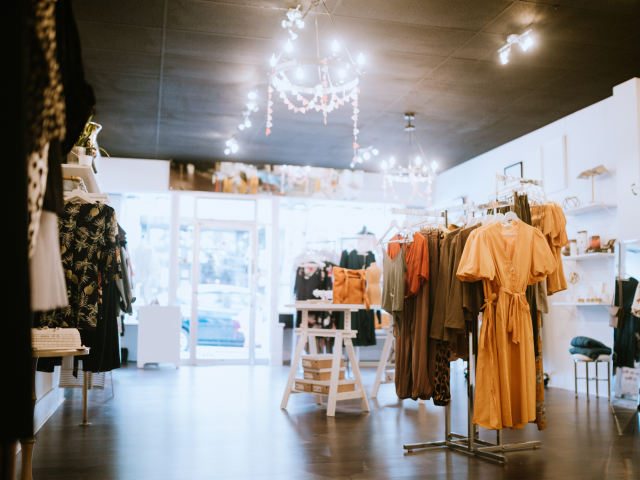The physical store is alive and evolving with innovative concepts, personalized touchpoints, and seamless omnichannel experiences.
A key theme from several of the past NRF showcases was the importance of the physical store and the impact it will have on the retail industry. Physical stores still account for the majority of commerce, according to a US Census Bureau report. Although retail stores are not dead, brands are changing the physical landscape in order to transform the customer experience in a connected store environment.
Today’s consumer is placed in the center of the entire shopping experience. With easy online access to products, demand for convenience, ever-changing needs, and online disruption, retailers need to adapt in the way they interact with customers to build trust and conversion rate.
Trend #1: Customer experience rather than product increases conversion
Brick-and-mortar stores are evolving to meet the demand of the customer. The customer is put at the center of the purchasing path rather than the product, making it all about the experience. With 80% of customers saying the experience a company provides is as important as its products and services, brands are shifting the focus of the physical space from product storing to experiential retail to create a rewarding customer experience. It’s about discovering the product in real-time before making the purchase.
Experiential retail allows consumers to discover the brand and own the entire customer journey. Luxury outerwear brand, Canada Goose, launched a productless in-store experience in Toronto allowing customers to test their coats in simulated environments before purchasing online. While PUMA’s NYC flagship store uses technology to connect with consumers as they play video games overlooking a virtual court, are greeted through virtual mirrors in fitting rooms and trial a pair of cleats with a soccer simulator.
Despite the rise in online shopping, consumers still prefer to have an in-store experience before buying a product. Retailers have to continue to come up with creative experiences for consumers to live and breathe their products and become brand advocates.
Trend #2: Data enhances personalization and customization
Brands continue to obtain and analyze customer data and utilize it to create personal shopping experiences. Since each consumer has a unique shopping DNA reflective of their buying needs, likes and behaviors, retailers are using data to place more emphasis on every touch point of the buyer’s journey and curate the right individual experience.
Localized and customized in-store experiences deepen the client brand connection. Since 2020, Sephora has launched 400 focused, more localized stores to give customers a more personalized experience closer to home. Lululemon’s NYC flagship store introduced ‘The Joinery’, allowing customers to curate their experience with customizable pants and leggings.
This year, retailers need to be more agile and responsive to customer behaviors and needs in order to increase customer loyalty and convert shoppers into buyers.
Trend #3: Digital and in-store convergence strengthens
Converging the digital and in-store experience is nothing new in retail, since 2020 there has been a much stronger push towards creating a seamless omnichannel experience. With nearly 75% of shoppers switching from channel to channel when shopping, retailers need to create seamless integrated experiences. Consumers demand their interactions with brands to be convenient and frictionless across all platforms— in-store visits, online purchases and social media communications.
Brands will continue to use a fulfillment strategy, Buy Online and Pickup in Store (BOPIS), to enhance the shopping experience. According to an NRF survey, nearly 70% said BOPIS improved their shopping experience and 80% of customers have picked up items at the in-store registers. Last year, Nordstrom opened up their Nordstrom Local stores to focus on store fulfillment and services. Customers can order online and pick up and make convenient returns in store.
Retailers will focus on quick, convenient and seamless transactions to complement online behavior with the physical store experience.
Trend #4: Direct to Consumer brands create long-term showroom models
This year we will continue to see Direct to Consumer (DTC) brands move into long-term brick-and-mortar spaces to create unique hands-on experiences. 51% of consumers feel it is important to get a personalized experience across all digital channels within a brand. Customers enjoy the easy online access to items, however, DTC brands want their consumers to discover and experience the brand culture before purchase. DTC brands are using the physical space to build trust and provide a sense of community.
Warby Parker, an American online eyewear retailer, continues to play in the physical retail game with more stores to open this year, including a Tampa store with its own eye exam suite. Brands are seeing that customers want to experience the product for themselves before making the purchase online and this lets DTC customers own the entire customer journey from start to end.
DTC retailers long-term physical showrooms will create community experiences rather than transactional visits. Experiences ranging from one-to-one services, customization and community building will help DTC brands increase conversion rates.
Trend #5: The future of convenience is in mobile POS
As experiential and seamless retail evolves, the mobile point of sale will have to improve to meet the demands of the convenience-driven consumer. According to a NRF survey, 83% said convenience while shopping is more important now compared with five years ago. Today customers expect faster transactions, the ability to click and collect in-store, and be able to checkout from anywhere in the store. Retailers need to equip store associates with intuitive mPOS solutions to deliver speed, mobility and transform the checkout process.
The connected customer is revolutionizing the online and in-store experience with increased expectations for convenience, personalization and instant gratification. The physical store will continue to grow and shift its purpose towards human connection, lifestyle adoption, and personalization to build awareness and convert to purchase.
Subscribe to our blog to be the first to hear about our updates on a regular basis.

